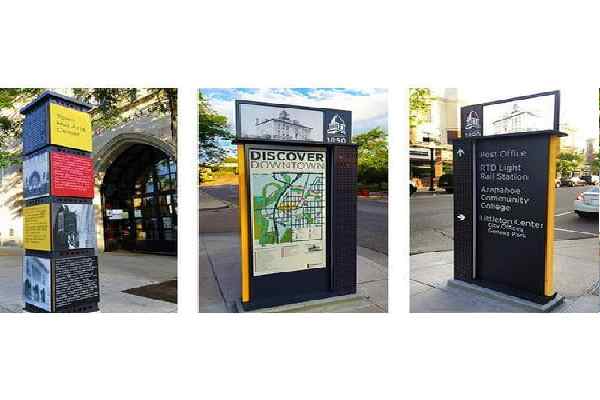6 Tips for Designing the Perfect Wayfinding Signs

Although nearly everyone has Google Maps, MapQuest, Waze, and other navigation apps on their mobile devices, wayfinding signs still play a crucial role in helping people find and get to their destination.
Wayfinding signs inform people how to get to a particular location in a certain area. They are often found along major highways, roads, and streets. They are staples in places that have famous landmarks or popular destinations that are not easy to locate as well.
Wayfinding signs can also be found in estate properties, parks, business, and industrial parks, and other places that are large enough for people, particularly first-time visitors, to get lost. These markers direct them to their destination, helping them save time and effort.
Because wayfinding signs provide direction and information to people who need them, they must be designed and created well so that they serve their purpose effectively.
Investing in Helpful Wayfinding Signage
If you need to have wayfinding signs made for a park, your business, estate property, or an event, their functionality and effectiveness will depend greatly on their design.
To create the perfect design, and come up with the best signs, follow these tips from the leading wayfinding and signage consultants in Dubai:
1. Assess the property
To come up with the right directions and instructions or information, survey the space first. Drive or walk around the area and familiarize yourself with the right routes and possible shortcuts.
While doing so, put yourself in other people’s shoes. Imagine which area or paths will confuse first-time visitors, and take note of them.
Additionally, take note of landmarks that will help in locating the destination easier or harder and think about how you can incorporate them in your signs, if possible.
2. Use text and messages that are easy to read and understand
Once you know what to put on the wayfinding signs, avoid using too many words. Be concise and clear with the content. Use language that everyone can understand and steer clear of fancy words when your only intent is to show people how clever you are.
Additionally, choose a legible font, the type that people can read easily. Make sure their size is large enough for anyone to see them within a reasonable distance as well.
Whenever possible, use symbols or pictograms. They are easier to understand and follow.
3. Choose the right colors
The color of the text and background play an important role in helping people see and decipher the signage easily and quickly.
The sign should have a good contrast between the background shade and the color of the text. In addition, make sure the tones you choose are easily noticeable.
If you want to follow your official brand colors, ensure they will still make the signs visible. If not, consider using brighter shades from the same palette to make the signage stand out.
4. Select a good-quality material for the signs
Since the wayfinding markers will be placed outdoors, make sure they stand up to the rigors of the job by choosing durable, long-lasting materials.
Galvanized steel, stainless steel, and aluminum are some of the best materials for outdoor signs that can withstand the constantly changing conditions of the outdoors.
With additional treatment such as paint, powder coats, or textured finishes, the markers will be protected from the harsh effects of UV rays, heavy rain, and high winds.
The additional coating will also help hide blemishes on the signs and make them easy to clean and maintain.
5. Choose the best material for the posts
Although the posts can be considered secondary to the signs themselves, they are still vital to the functionality and design of wayfinding markers.
Pressure-treated wooden posts are popular options since they are less expensive. However, they are only temporary and have to be replaced with stronger, longer-lasting ones.
Aluminum and galvanized metal are the most recommended materials for wayfinding signposts as well. They can withstand the harsh effects of the environment and are harder to remove or destroy by physical means.
Additionally, consider building “post boots” into the design. These features are not only functional and keep the sign in position; they make the signage look more interesting and appealing, too.
6. Place the signs at the right spots
Wayfinding signs need to be installed in areas where people need to change their direction or to make a decision. As such, they have to be placed at crossroads, transition places, entrances, and exits.
However, this does not mean you can’t choose the areas where they can be installed. For instance, if you need to install a sign in the parking area, put it in a spot far enough from the curb stops so that it does not become a stop mark for vehicles.
If possible, install the sign in an area with shrubs for additional protection. You can also consider growing bushes around the signage for shelter. The plants will add to the appeal of the sign as well.
With the right design for your wayfinding signage, additional enhancements, and proper installation, these markers will direct everyone to the right path of their destination.
AUTHOR BIO:
Zak Zakaria is a Waymaker at dezigntechnic in Dubai who also previously worked as the company’s Graphic Designer and Art Director. Zak is a creative with work experience in multiple multinational agencies such as JWT and Saatchi & Saatchi. Signage design is a family business, making Zak’s personal experience with signage his longest professional commitment.
